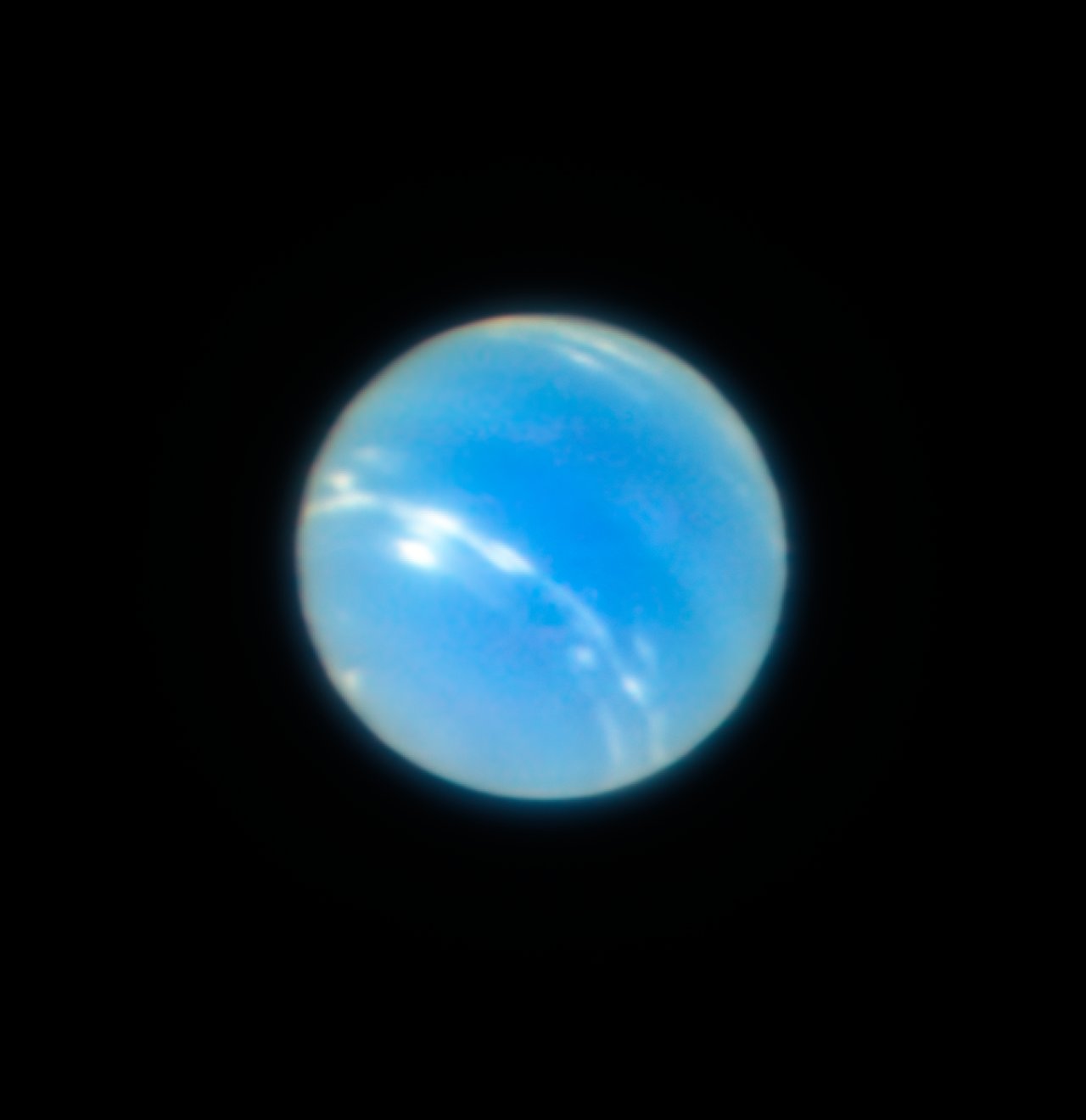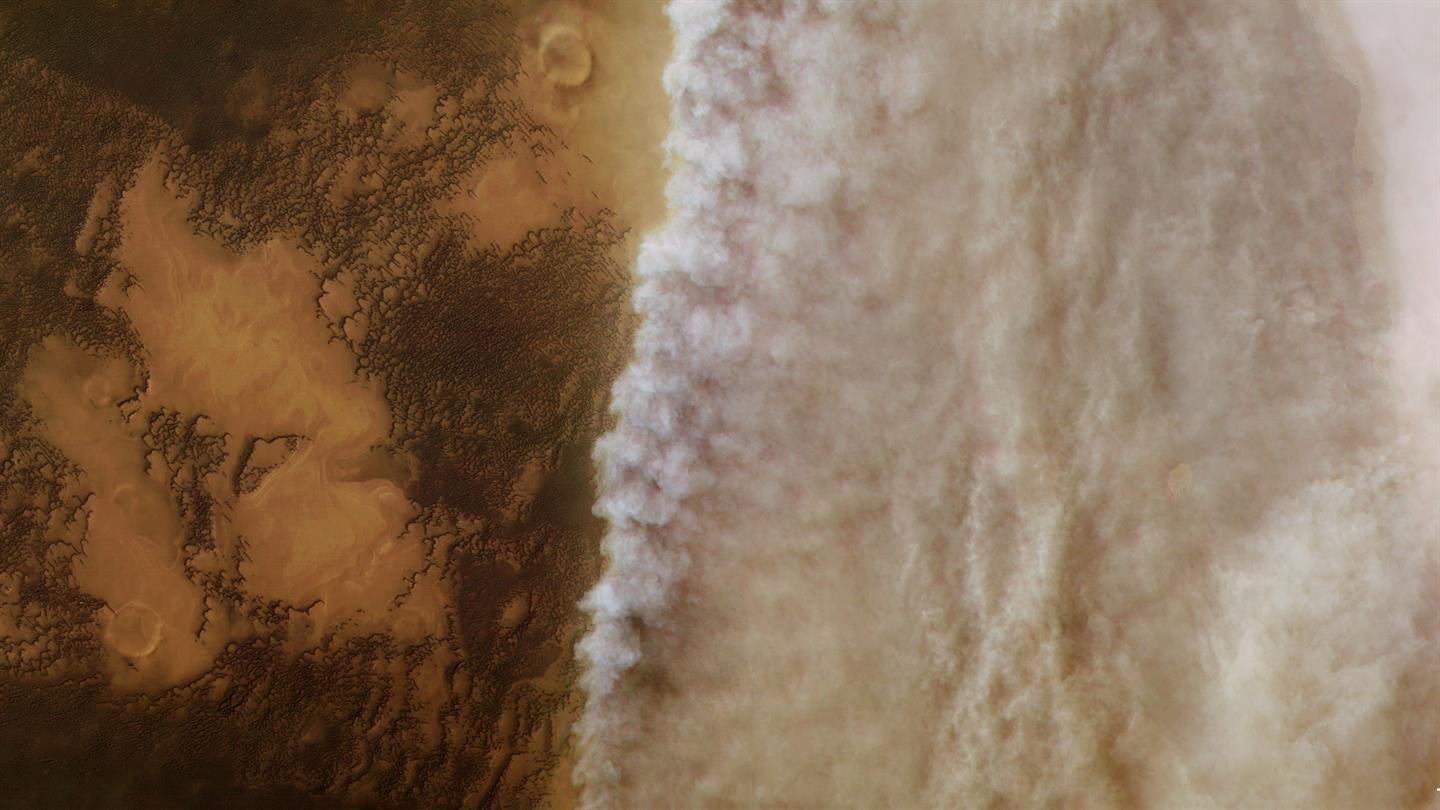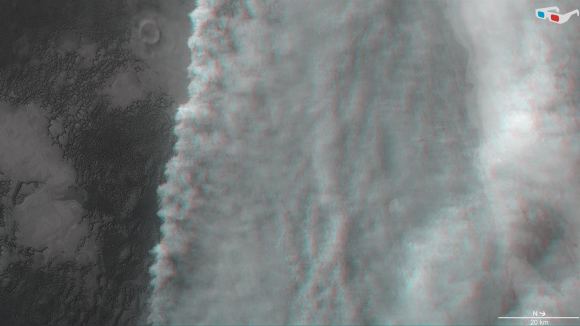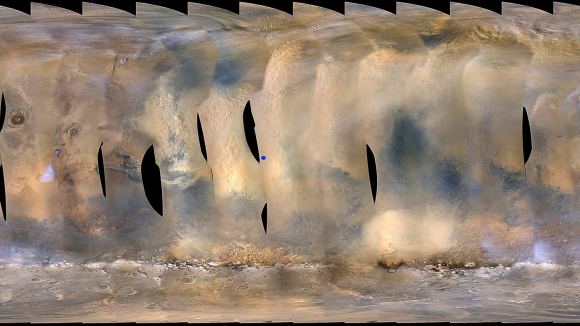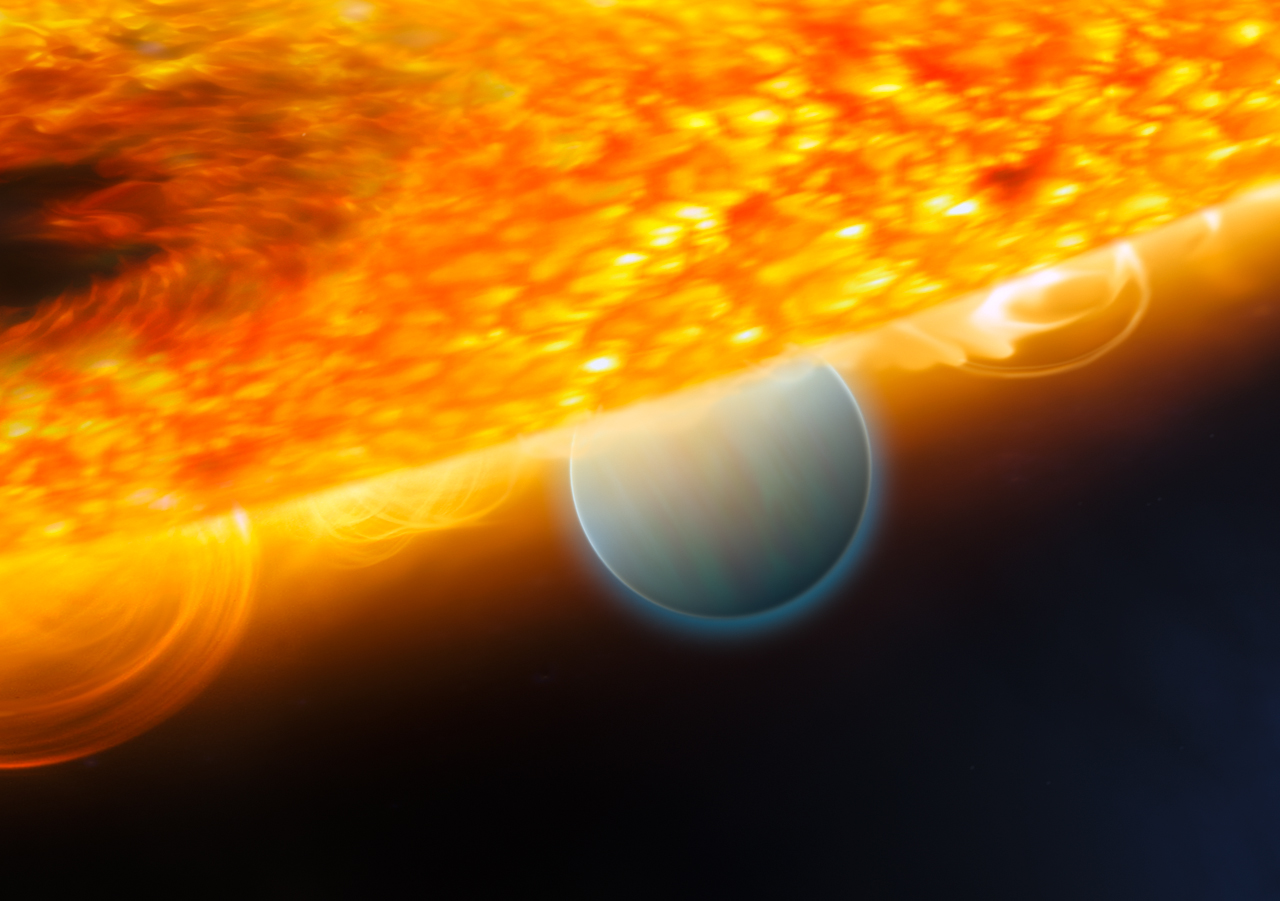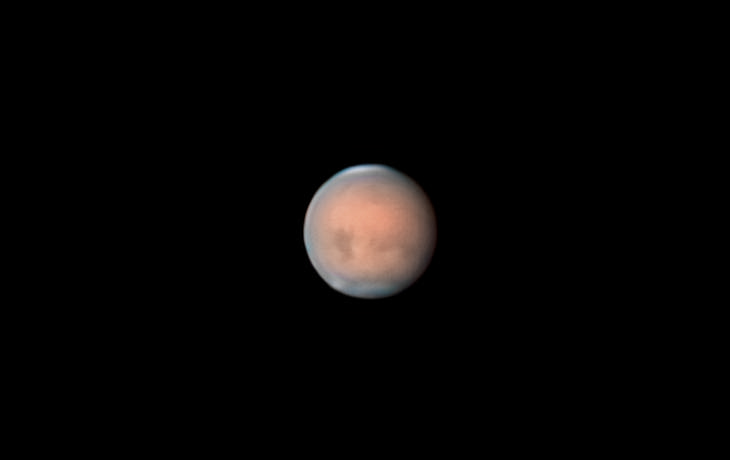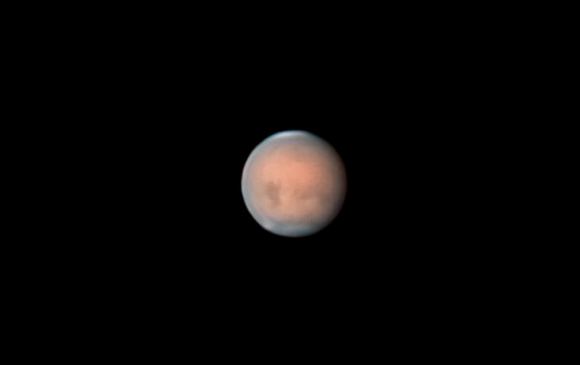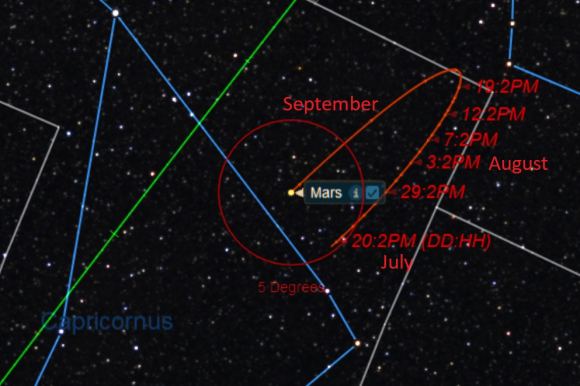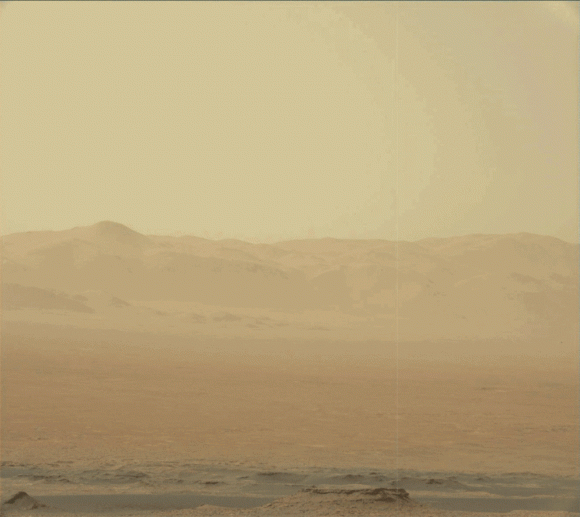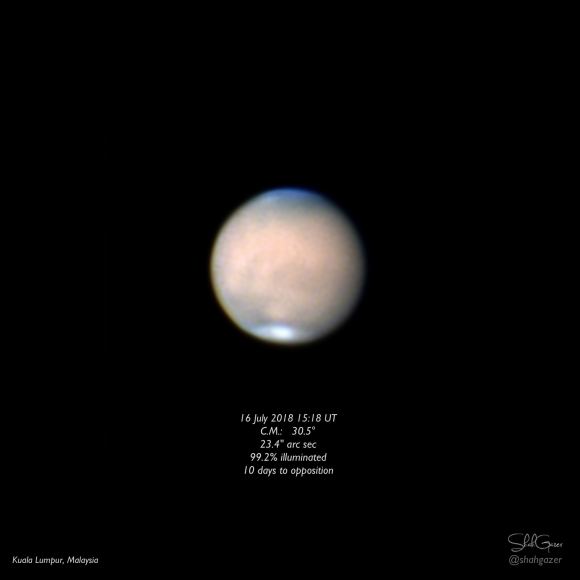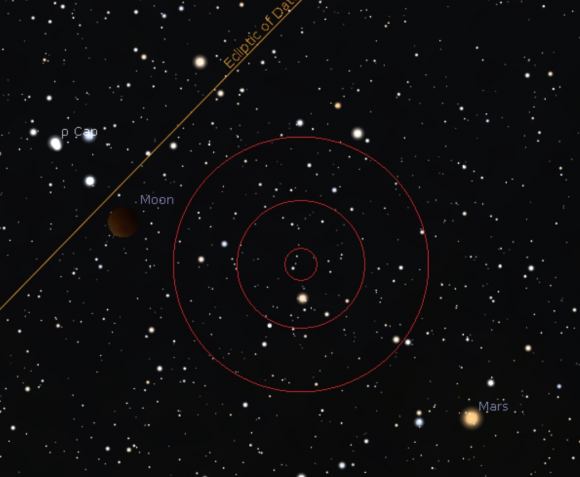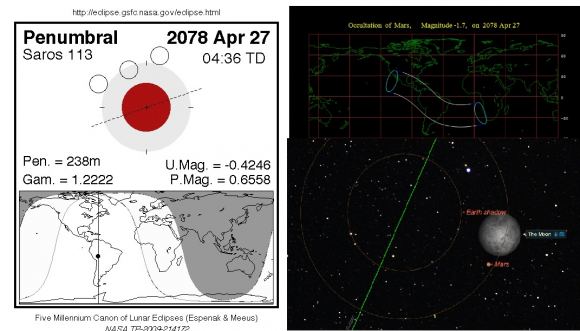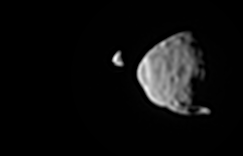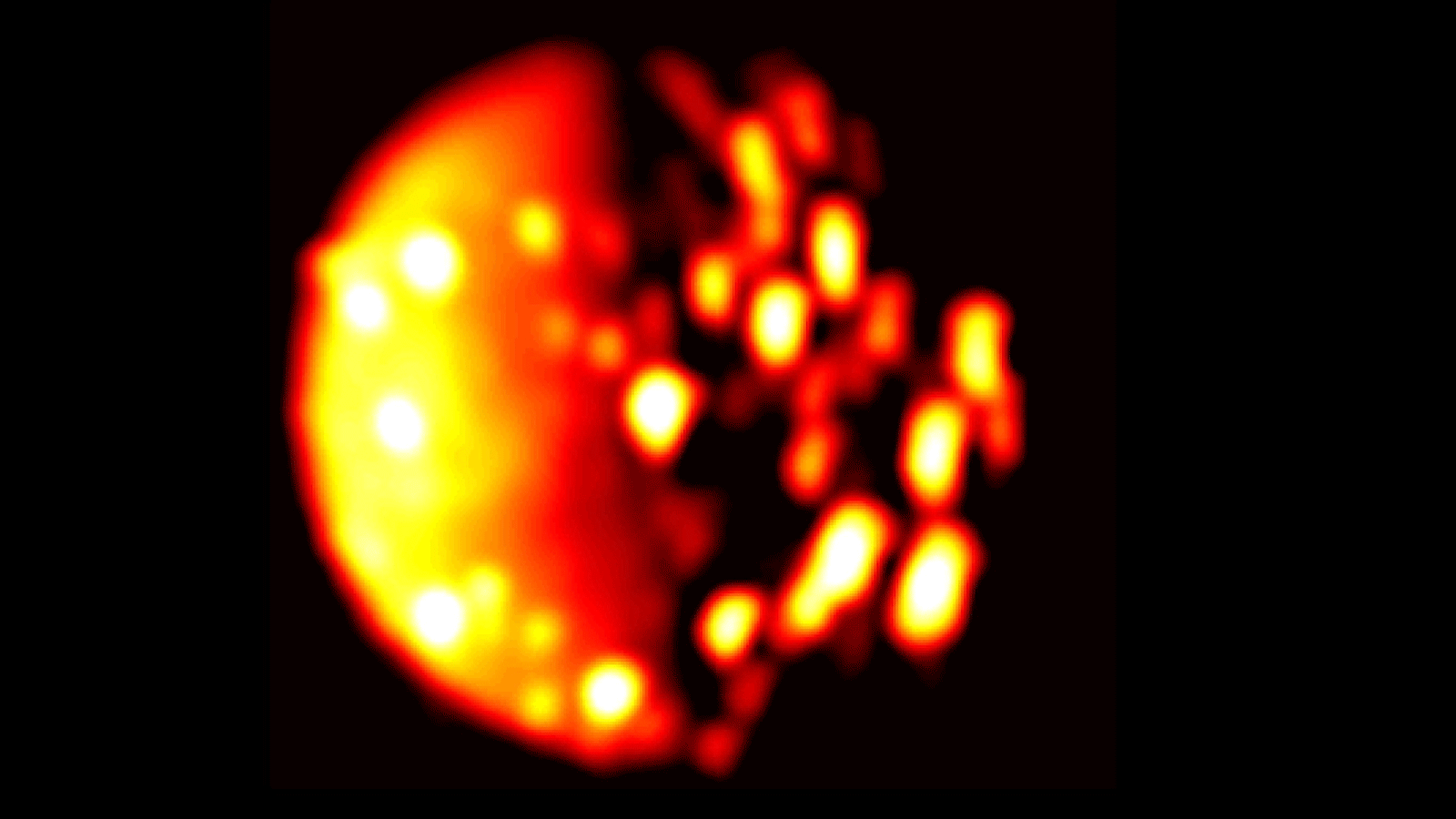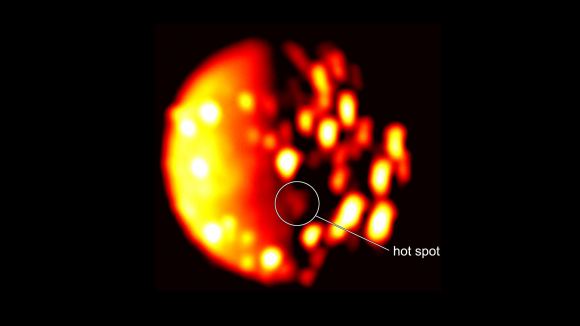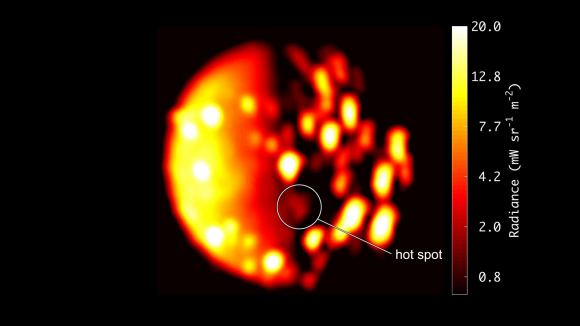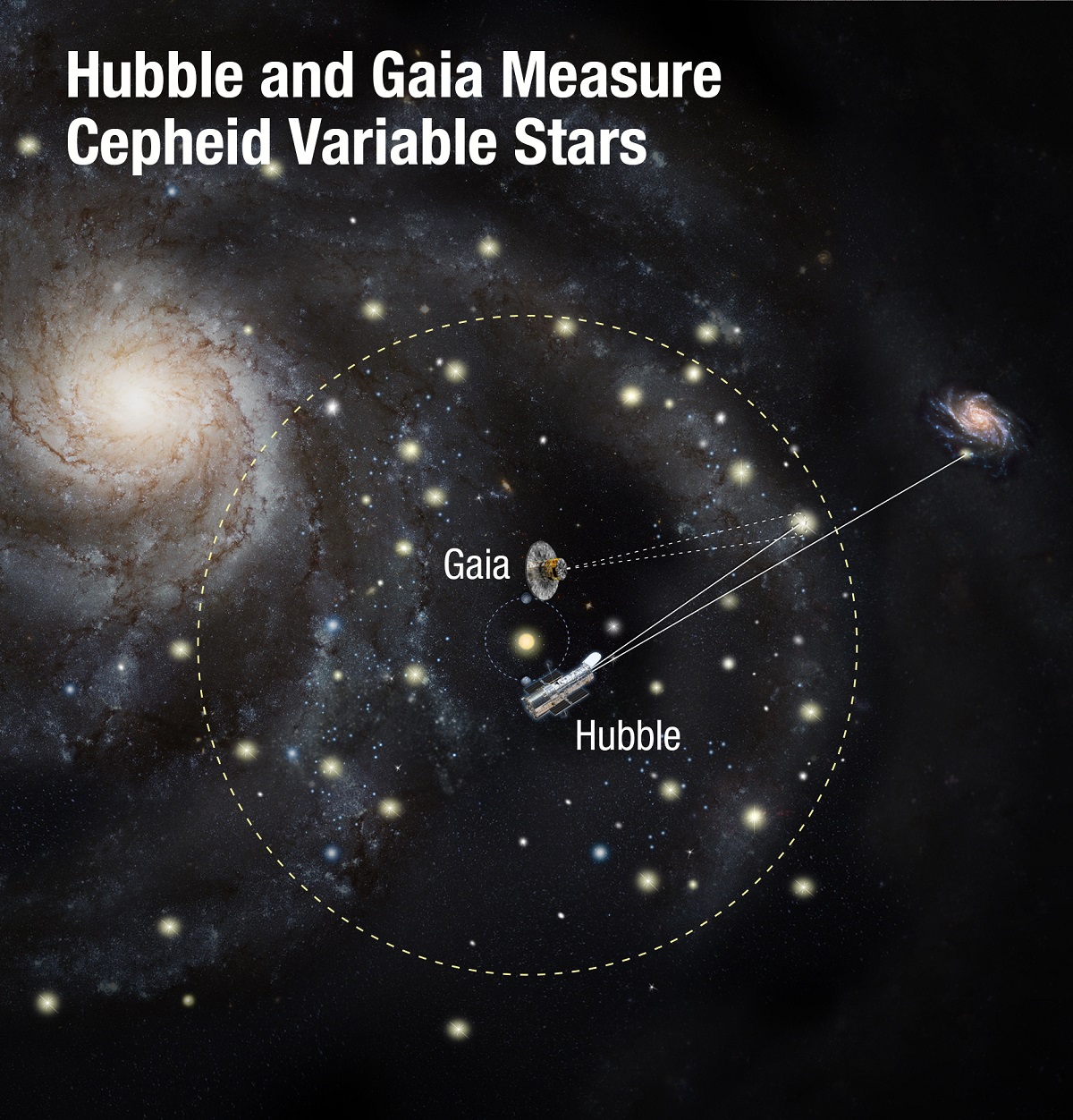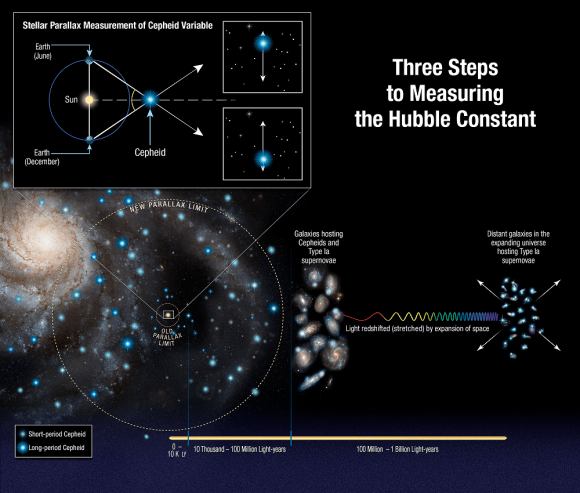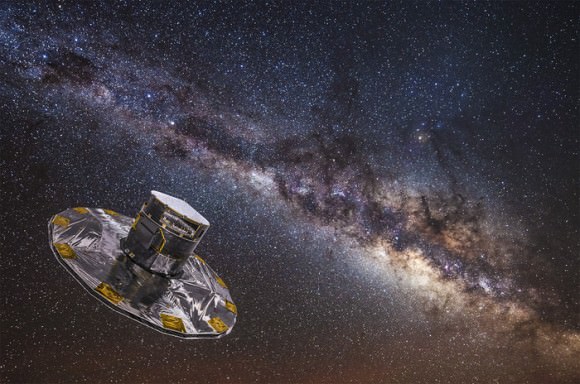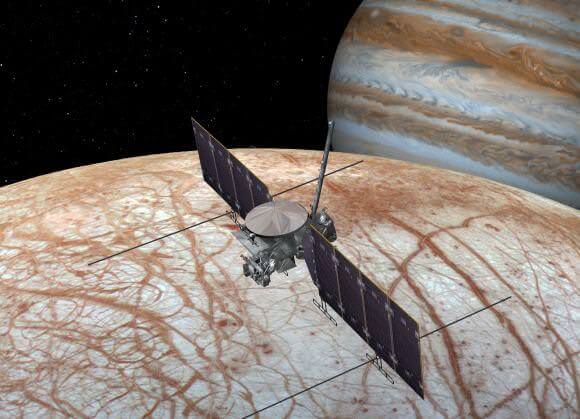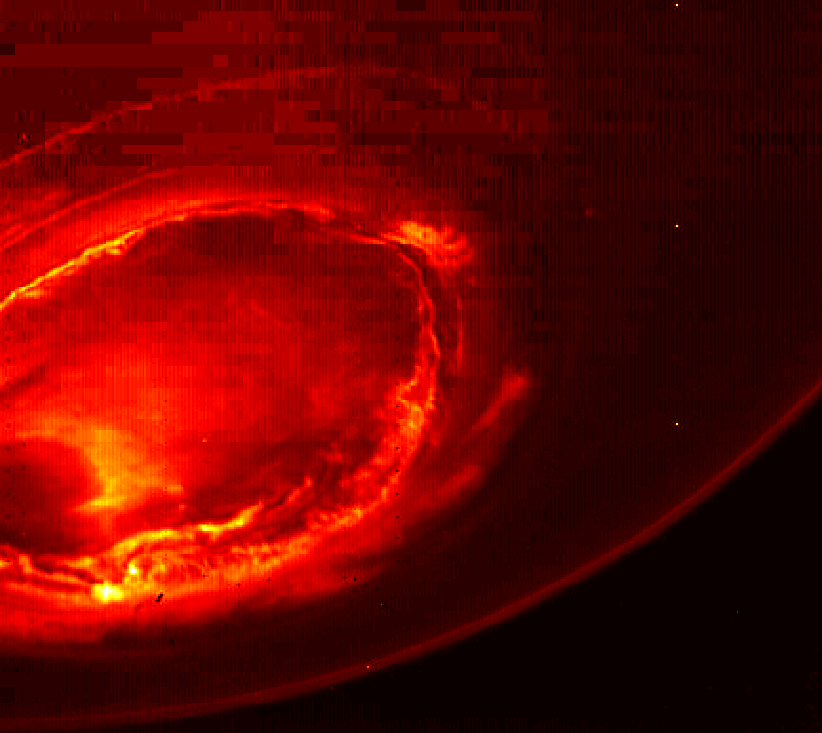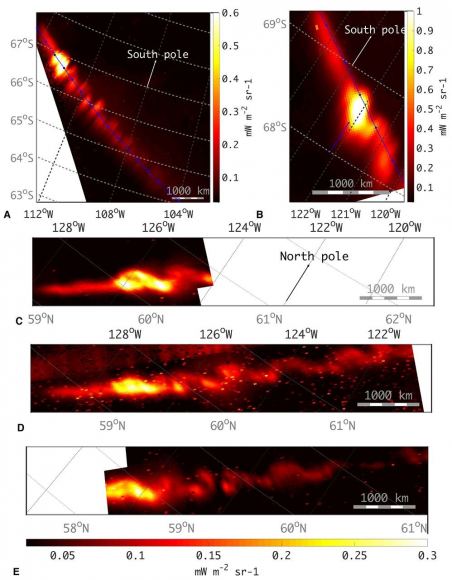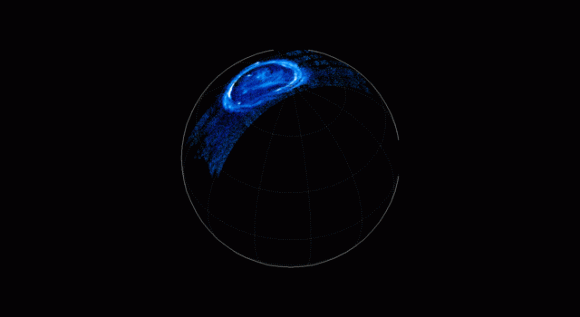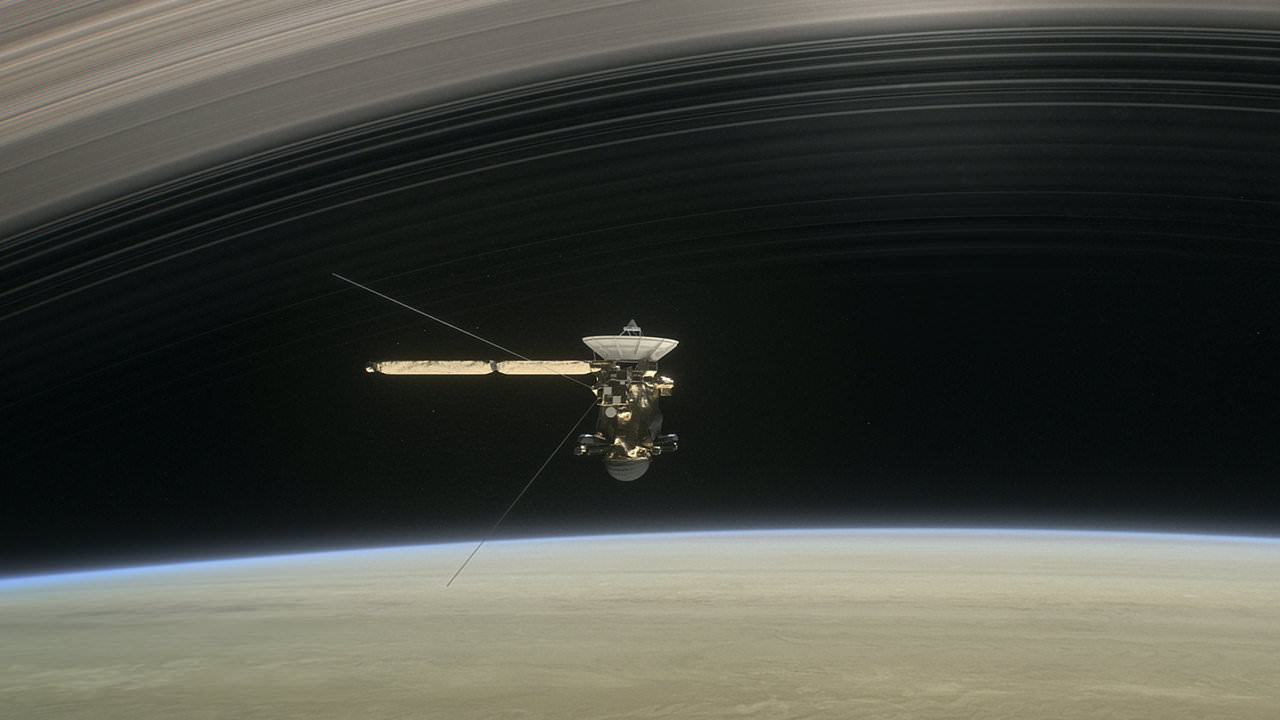In 2007, the European Southern Observatory (ESO) completed work on the Very Large Telescope (VLT) at the Paranal Observatory in northern Chile. This ground-based telescope is the world’s most advanced optical instrument, consisting of four Unit Telescopes with main mirrors (measuring 8.2 meters in diameter) and four movable 1.8-meter diameter Auxiliary Telescopes.
Recently, the VLT was upgraded with a new instrument known as the Multi Unit Spectroscopic Explorer (MUSE), a panoramic integral-field spectrograph that works at visible wavelengths. Thanks to the new adaptive optics mode that this allows for (known as laser tomography) the VLT was able to recently acquire some images of Neptune, star clusters and other astronomical objects with impeccable clarity.
In astronomy, adaptive optics refers to a technique where instruments are able to compensate for the blurring effect caused by Earth’s atmosphere, which is a serious issue when it comes to ground-based telescopes. Basically, as light passes through our atmosphere, it becomes distorted and causes distant objects to become blurred (which is why stars appear to twinkle when seen with the naked eye).
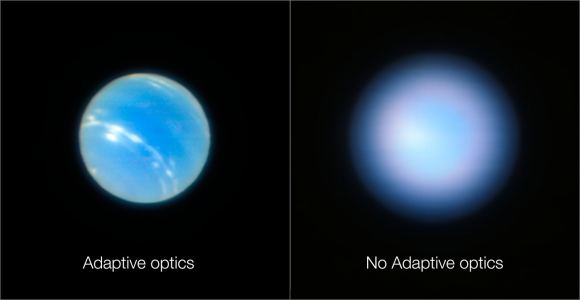
One solution to this problem is to deploy telescopes into space, where atmospheric disturbance is not an issue. Another is to rely on advanced technology that can artificially correct for the distortions, thus resulting in much clearer images. One such technology is the MUSE instrument, which works with an adaptive optics unit called a GALACSI – a subsystem of the Adaptive Optics Facility (AOF).
The instrument allows for two adaptive optics modes – the Wide Field Mode and the Narrow Field Mode. Whereas the former corrects for the effects of atmospheric turbulence up to one km above the telescope over a comparatively wide field of view, the Narrow Field mode uses laser tomography to correct for almost all of the atmospheric turbulence above the telescope to create much sharper images, but over a smaller region of the sky.
This consists of four lasers that are fixed to the fourth Unit Telescope (UT4) beaming intense orange light into the sky, simulating sodium atoms high in the atmosphere and creating artificial “Laser Guide Stars”. Light from these artificial stars is then used to determine the turbulence in the atmosphere and calculate corrections, which are then sent to the deformable secondary mirror of the UT4 to correct for the distorted light.
Using this Narrow Field Mode, the VLT was able to capture remarkably sharp test images of the planet Neptune, distant star clusters (such as the globular star cluster NGC 6388), and other objects. In so doing, the VLT demonstrated that its UT4 mirror is able to reach the theoretical limit of image sharpness and is no longer limited by the effects of atmospheric distortion.
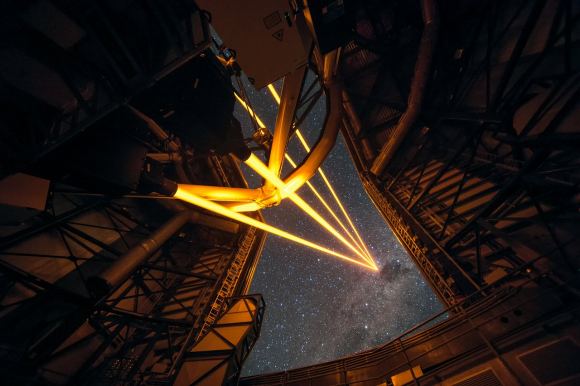
This essentially means that it is now possible for the VLT to capture images from the ground that are sharper than those taken by the Hubble Space Telescope. The results from UT4 will also help engineers to make similar adaptations to the ESO’s Extremely Large Telescope (ELT), which will also rely on laser tomography to conduct its surveys and accomplish its scientific goals.
These goals include the study of supermassive black holes (SMBHs) at the centers of distant galaxies, jets from young stars, globular clusters, supernovae, the planets and moons of the Solar System, and extra-solar planets. In short, the use of adaptive optics – as tested and confirmed by the VLT’s MUSE – will allow astronomers to use ground-based telescopes to study the properties of astronomical objects in much greater detail than ever before.
In addition, other adaptive optics systems will benefit from work with the Adaptive Optics Facility (AOF) in the coming years. These include the ESO’s GRAAL, a ground layer adaptive optics module that is already being used by the Hawk-I infrared wide-field imager. In a few years, the powerful Enhanced Resolution Imager and Spectrograph (ERIS) instrument will also be added to the VLT.
Between these upgrades and the deployment of next-generation space telescopes in the coming years (like the James Webb Space Telescope, which will be deploying in 2021), astronomers expect to bringing a great deal more of the Universe “into focus”. And what they see is sure to help resolve some long-standing mysteries, and will probably create a whole lot more!
And be sure to enjoy these videos of the images obtained by the VLT of Neptune and NGC 6388, courtesy of the ESO:
Further Reading: ESO

